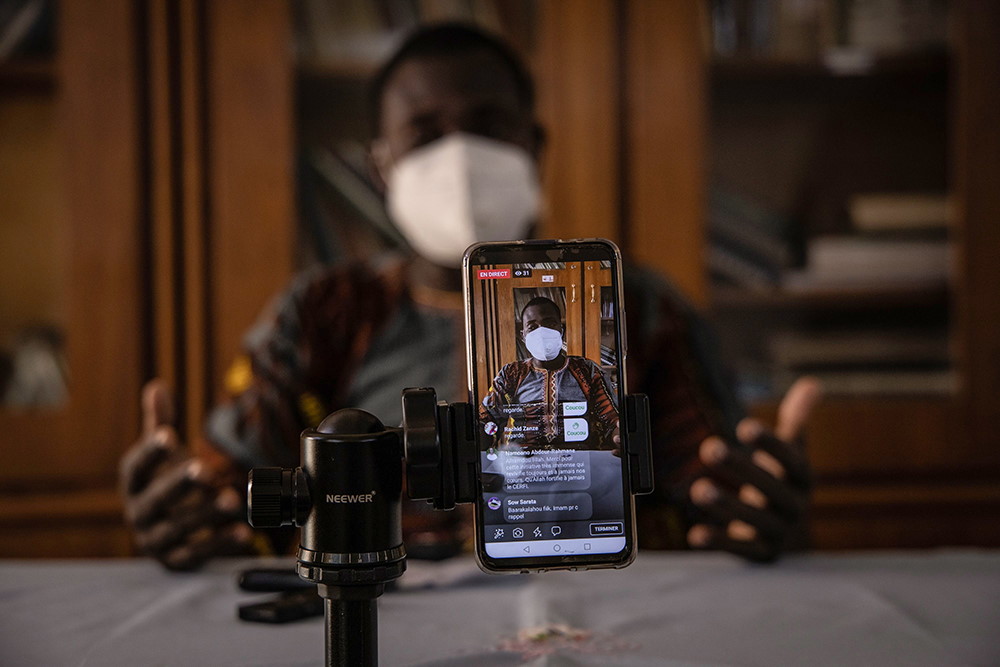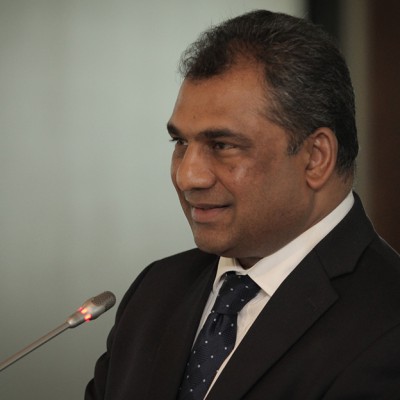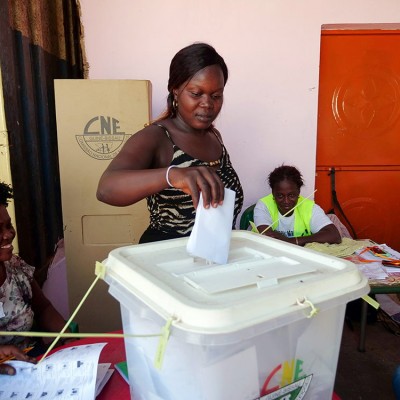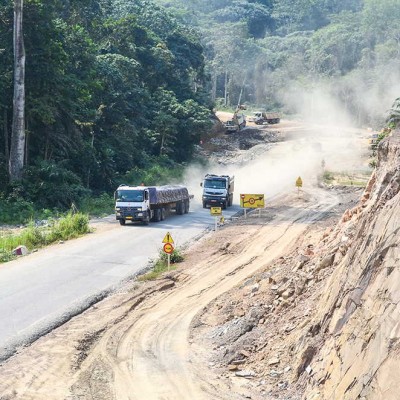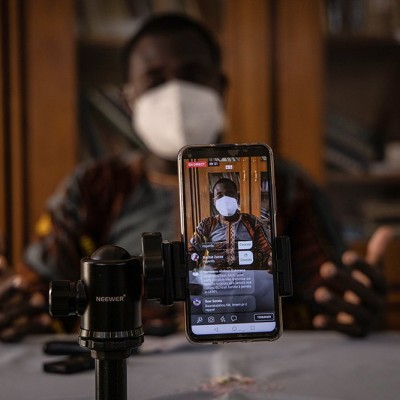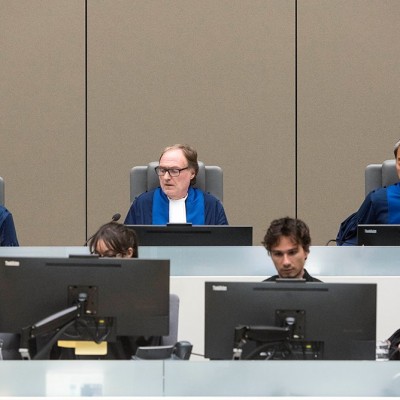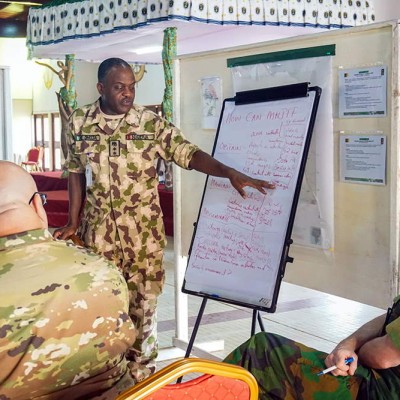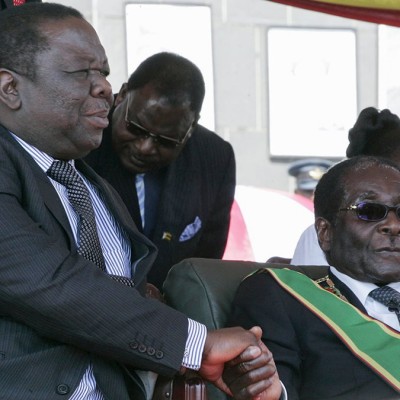Introduction
The power of social media in contemporary society cannot be ignored. Social media platforms such as Twitter, Facebook and WhatsApp, among others, provide a space in which society can communicate freely and cheaply, articulating their divergent viewpoints. Social media can be used to promote peace and tolerance if used carefully. However, academics have noted that social media can also have destructive consequences for society, such as heightened conflicts and hatred, due to the spread of “fake” information from various sectors of society. There is empirical evidence showing how social media has been used as a tool to promote hate speech and the isolation of certain groups in society. When parties with divergent viewpoints take their conflict into the offline sphere, it can lead to bloodshed and death.

This article provides examples of movements on Facebook and Twitter, which show how social media is a place for both good and destructive conflict resolution. “Good” refers to the idea that social media can give marginalised groups voice and help protesters acquire solidarity with the international community, resulting in policy change and action from government and other stakeholders. “Destructive” refers to the idea that social media can be used to create tensions and spread “fake news” with the intention to mislead, thereby inciting conflict and violence.
Literature review
The internet and social media are a huge part of our lives, and they feature prominently in our social and political lives. They affect how we do business, share information and knowledge and how we relate to other people in the local and global contexts. Social media refers to “specific sets of internet-based and networked communication platforms enabling a convergence of public and personal communication”.1 Social media is also defined as referring to the content posted on various social platforms.2 This content ranges from images, videos and texts about personal, social and political lives posted and shared on platforms such as Twitter, Facebook, Instagram and WhatsApp, among others. Other scholarly definitions emphasise how information and ideas are shared within an online community via mobile phones, tablets and desktop computers, among other tools, if they are connected to the internet.3 The power of social media in raising awareness helps issues get out into the global public arena. The explosion of online political groups and activism across the world shows how citizens use social media to air their grievances, which extends their participation in the social and political spheres,4 or their participation in the Habermasian public sphere,5 which refers to the social spaces where individuals gather to discuss their common public affairs. “Digital storytelling and the internet thus provide a powerful counterpoint to mainstream, or political narratives and act as conduits for stimulating dialogue amongst ordinary citizens and influencing change.”6
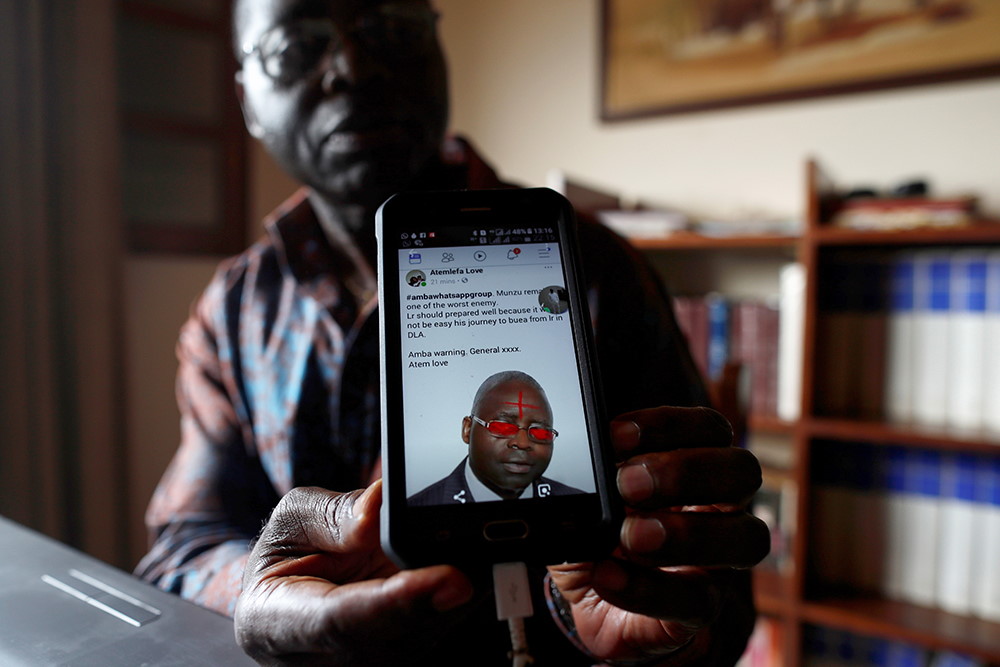
There has been an increase in the number of online protests, as citizens continue to clamour for the respect of human rights and the rule of law the world over. Through social media, citizens are able to freely express themselves on social and political issues. Scholars argue that “the internet is seen as helping marginalised groups develop their own deliberative forums, link up, and subsequently contest dominant meanings and practices” through the creation and exchange of user-generated content.7 The role of alternative media in reinforcing the ability of subaltern groups to challenge dominant power structures is made evident.8
On the other hand, scholars have noted that there are negative uses of social media by citizens that have detrimental results. People use social media to attack the reputation of others, to post inflammatory and digressive messages, and to persecute others. This is evident in the spread of hate speech for the promotion of violent agendas, and the spread of fake news with the deliberate intention to mislead.9 Social media is used by some as weapons of war to discredit and fight the “enemy” through fake news.10 Fake news and online misinformation are serious problems across the world.11 Bots and the rise of artificial intelligence are contributing to the spread of false content via fake user accounts, making conflict inevitable. With the opening of the democratic space, more fake news is being circulated online, which undermines trust in mainstream media, builds and feeds on community divisions, and distorts democratic processes.12 False news spreads fast on social media, and those behind it do it knowingly or unknowingly.13 The British Broadcasting Corporation’s (BBC) research project on fake news in India, Kenya and Nigeria in 2018 showed that health, religion and terrorism were among the issues circulated under the banner of fake news, with the intention to create scares and fuel hate speech, leading to violence and death.14
Protest movements in Africa and across the world
Through social media, society has witnessed the communication, organisation and mobilisation of various kinds of protests including the Arab Spring (2011), #BlackLivesMatter (2013), #BringBackOurGirls (2014) and #MeToo (2017), among others. Through these protest movements, oppressed groups were able to share their grievances and find support in the global world15 via social media platforms. The #BringBackOurGirls16 campaign, which started in 2014 after more than 200 girls were kidnapped by the Boko Haram insurgent group from Chibok Secondary School in north-east Nigeria, shows how tweets from a few Nigerians gave birth to a global response in support of the cause.17 As soon as the cause spread on social media, it became one of international importance. Social media played a key role in forcing the issue onto the international agenda as millions, including the former first lady of the United States of America (USA), Michelle Obama, posted images of themselves in support of the cause.18 However, without real action on the ground, hashtags, likes and shares cannot bring real meaningful change, as some scholars argue. The advantage of social media in this movement is seen in how “the spotlight continues to shine on the plight of the Chibok girls, years after the kidnapping”.19 However, others argue that the Nigerian government did not do enough to address this challenge, as kidnappings by Boko Haram continued.20 Online campaigns only helped campaigners and journalists put pressure on the Nigerian government, but nothing much changed.

The Women’s March in 2017 in the USA and #MeToo movements began on Facebook and gathered international support. These movements also demonstrated the blurred line between the online and offline worlds. In the USA, women protested policies such as reproductive rights, immigration and civil rights, and police violence immediately after President Donald Trump took office in 2017.21 The marches, across the different states, involved hundreds of thousands of women with support from influential personalities, such as former first lady Hillary Clinton and Senator Elizabeth Warren, and many celebrities. The #MeToo movement involved millions of individuals around the world, who used the #MeToo hashtag in support of survivors of sexual harassment and violence in the wake of sexual harassment and assault allegations against high-profile Hollywood producer, Harvey Weinstein.22 The mass sharing of the #MeToo hashtag in 24 hours made apparent the magnitude of sexual harassment against women across the world, as it gave rise to further movements by women in different parts of the world (China, Spain, Italy and Argentina, among others). It also helped women establish a community of survivors, and is seen as a historic milestone in the fight for women’s rights. In Africa, #MeToo took its own form as African women held marches in various places. Social media23 is thus empowering women and other marginalised groups in society, enabling them to voice their grievances.
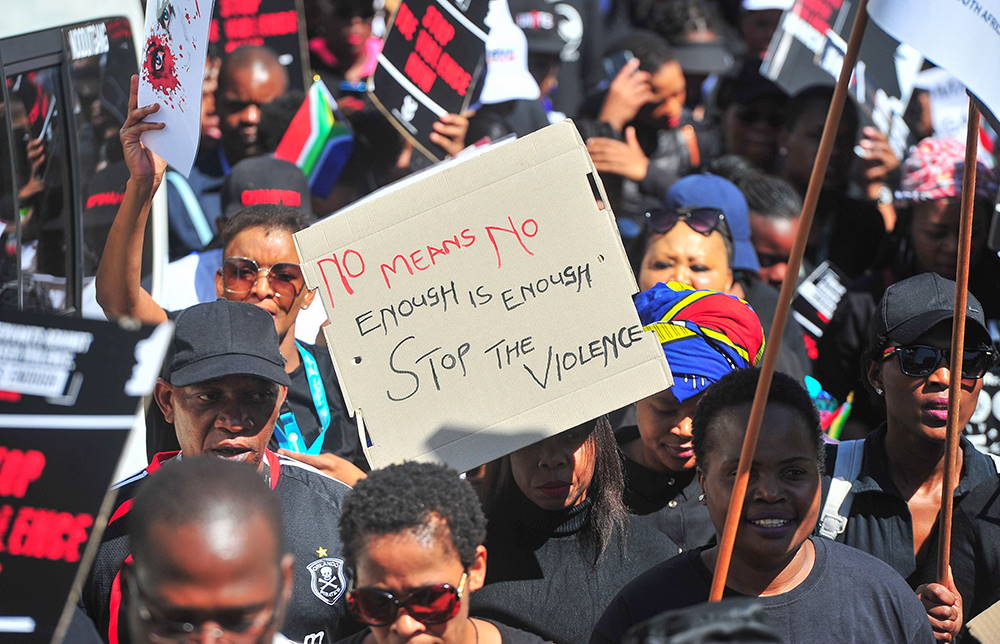
In South Africa, thousands of women embarked on marches in 2019 “at the government’s failure to deal with rising violence against women in the wake of a string of brutal attacks that shocked the country”.24 The protest, organised by WomenProtestSA, saw local celebrities and thousands of people take to social media to express their anger and frustrations about gender violence under the hashtags #NotInMyName, #AmINext and #SAShutDown. Before the protest, women used social media to share images of women who were murdered by their partners and were often victims of rape.25 There was anger over the state’s failure to protect women and children. The protest was an indication that there is a crisis of gender-based violence in the country that needs urgent action.
In Zimbabwe, a movement by citizens started on Facebook enabled them to challenge late former president Robert Mugabe’s power in 2016–2017. The #ThisFlag movement, which was started accidentally on Facebook by Pastor Evan Mawarire, attracted tens of thousands of hits and went viral. Local citizens in public and private institutions, together with those in neighbouring countries such as South Africa and in the wider diaspora, joined in the protest when they demonstrated at various Zimbabwean consulate offices, demanding that Mugabe and his government step down. Mawarire’s Facebook video and subsequent posts on Twitter helped set the stage for the biggest protest against the government. The movement, which became known as #ShutdownZimbabwe, came in the wake of a deepening economic crisis in the country that had resulted in failure by the government to pay civil servants on time.26 Increasing levels of unemployment among graduates, corruption and police brutality, among others, were on the list of problems cited by aggrieved protesters. Restricted democratic space has spawned a multiplicity of alternative public spheres that give groups and individuals the power to participate and engage in debates on the Zimbabwean crises and resistance to state propaganda churned out through the mainstream media.27

The #ThisFlag movement gained international sympathy and support, and influenced the global and regional news media agenda when large media organisations such as Cable News Network (CNN), the BBC, Africa News Network (ANN7), South Africa Broadcasting Corporation (SABC), Al Jazeera and Sky News, among others, reported these events, thus placing Zimbabwe in the international spotlight and putting pressure on Mugabe’s government to introduce reforms. The Zimbabwe media, which was largely pro-government, attempted to play down the movement, but it was difficult because it had already gathered momentum and become a global spectacle, with mounting pressure for Mugabe and his government to step down coming from within and outside Zimbabwe. In response to the protest, Mugabe’s government reduced the number of police officers on the streets and provided salary payment dates for civil servants, but the government also intensified efforts to regulate social media.
Social media has become a focal point for uniting individuals, regardless of their personal experiences, cultural differences and geographic location. The importance of social media in enabling citizens to organise themselves and garner support on a national and international scale is evident in the many examples of protests.
The downside of social media is evident in its use to propagate fake news and hate speech with the intention of creating instability and conflict. Fake news is being used as a political weapon in conflict. A Reuters investigation28 exposed more than 1 000 examples of hateful posts, images and comments against the Muslim community in Myanmar. For example, Twitter was used to spread hate speech against the Rohingya. Examples from the Reuters report indicate that posts referred to the Rohingya as “dogs, maggots, rapists and that they should be fed to pigs, be shot and exterminated”, among others.29 The same tools used in the previously mentioned protests that galvanised people for a common good cause can also be used to promote hate and isolation. As social media’s presence in our society grows, there is more fear of increasing polarisation, hate speech and fake news, which all fuel conflict.30 Facebook was blamed for failing to control the crisis in Myanmar. An analyst from the Institute for War and Peace Reporting who led a two-year study of hate speech in Myanmar, Alan Davis, said that in the months before August 2017, he noticed posts on Facebook becoming “more organised and odious, and more militarised”.31
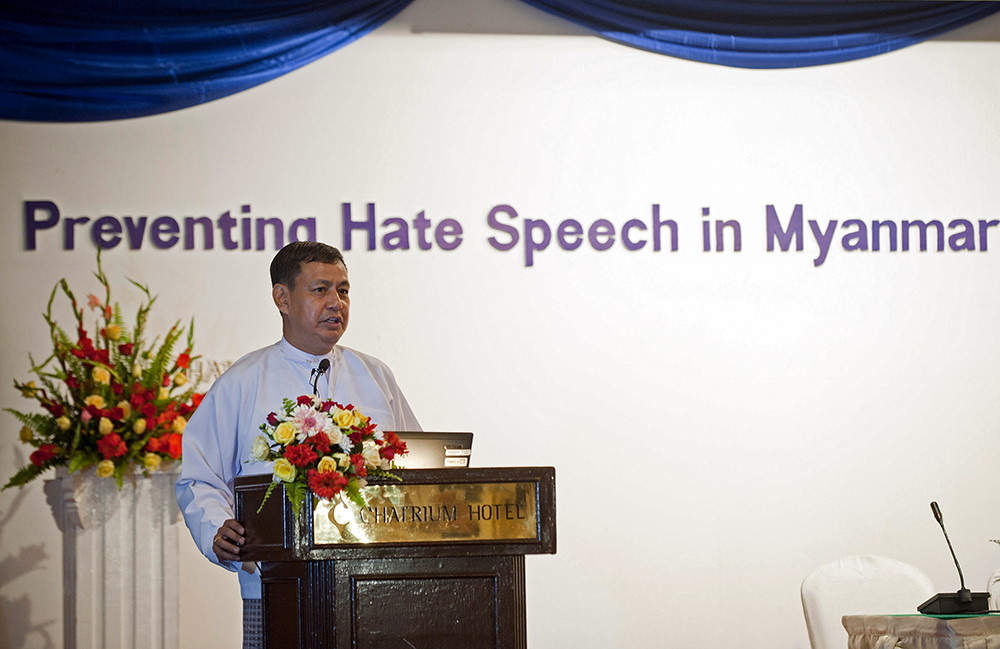
Similarly, in the 2019 xenophobic attacks against migrants in South Africa, which led to thousands being displaced and several dying, social media was used by perpetrators of violence to circulate misinformation and rumours to foster panic and confusion. “Anti-migrant rhetoric had been circulating on social media among groups alleging immigrants cheat their customers with out-of-date produce in their shops, take jobs from locals and defraud the state.”32 During the attacks, old videos and photos of violence from other countries were circulated online and passed off as recent footage, which provoked outrage in South Africa and outside the country.33 Some individuals in other countries such as Nigeria, who saw the images and videos, began attacking South Africans in their country.34 Scholars have highlighted that in conflict, the spread of information on social media is increased, making it difficult to control.
Conclusion
It is clear that social media can be used by people as a tool for good and bad. Some of the good or positive uses are when users share their grievances online with the potential of getting national and international support. This puts pressure on local governments to introduce reforms to help solve problems. On the negative side, people use social media to spread hate speech, fake news and propaganda, which incites conflict and violence and can result in death. While both the positive and negative examples of social media in conflict have been discussed, the positive uses of social media in conflict resolution should be encouraged among people. Social media can be used to prevent conflict if users share constructive messages and create peace campaigns..35 Social media can play a huge role in emancipating and giving voice to those who otherwise may not be heard, with the potential to become a significant factor in conflict resolution.
Endnotes
- Meikle, Graham (2016) Social Media: Communication, Sharing and Visibility. New York: Routledge. p. x.
- Miller, Daniel; Costa, Elisabetta; Haynes, Nell; McDonald, Tom; Nicolescu, Razvan; Sinanan, Jolynna; Spyer, Juliano; Venkatraman, Shriram and Wang, Xinyuan (2016) How the World Changed Social Media. London: UCL. pp. 1–20.
- Castells, Manuel (2013) Communication Power. Oxford: Oxford University Press. pp. xxi–xxv.
- Bowen, Charles (1996) Modem Nation: The Handbook of Grassroots American Activism. New York: Random House, pp. 1–25.
- Papacharissi, Zizi (2002) The Virtual Sphere: The Internet as a Public Sphere. New Media and Society 4 (1), pp. 9–27.
- Bohler-Muller, Narnia and Van Der Merwe, Charl (2011) Technosociality: When Technology Meets our Social Behaviour. Rhodes Journalism Review, pp. 27–28.
- Sen, A. Fuyla (2012) The Social Media as a Public Sphere: The Rise of Social Opposition. International Conference on Communication, Media, Technology and Design (ICCMTD). Istanbul: Fırat Universitesi, p. 490.
- Downing, John (2001) Radical Media: Rebellious Communication and Social Movements. Thousand Oaks, California: Sage, pp. 1–22.
- Zeitzoff, Thomas (2017) How Social Media is Changing Conflict. Journal of Conflict Resolution, 61 (9) pp. 1970–1991.
- Singer, Peter W. and Brooking, Emerson T. (2018) LikeWar: The Weaponisation of Social Media. New York: Harcourt, pp. 1–22.
- Chiluwa, Innocent E and Samoilenko, Sergei A. (n.d.) Handbook of Research on Deception, Fake News, and Misinformation Online. IGI Global, p. xxiii.
- British Broadcasting Corporation (BBC) (2018) ‘What We’ve Learnt about Fake News in Africa’, BBC News, 12 November, Available at: <https://www.bbc.co.uk/news/world-africa-46138284> [Accessed 12 January 2020].
- Graham, David A. (2019) ‘Some Real News about Fake News’, The Atlantic, 7 June, Available at: <https://www.theatlantic.com/ideas/archive/2019/06/fake-news-republicans-democrats/591211/> [Accessed 12 January 2020].
- Ibid.
- Raleva, Ralitsa (2018) ‘Social Media: A Place for Good and Evil in Conflict Resolution’, Shout Out UK, 27 December, Available at: <https://www.shoutoutuk.org/2018/12/27/social-media-a-place-for-good-and-evil-in-conflict-resolution/> [Accessed 12 January 2020].
- Holpuch, Amanda (2018) ‘Stolen Daughters: What Happened after #BringBackOurGirls?’, The Guardian, 22 October, Available at: <https://www.theguardian.com/tv-and-radio/2018/oct/22/bring-back-our-girls-documentary-stolen-daughters-kidnapped-boko-haram> [Accessed 12 January 2020].
- Collins, Matt (2014) ‘#BringBackOurGirls: The Power of a Social Media Campaign’, The Guardian, 9 May, Available at: <https://www.theguardian.com/voluntary-sector network/2014/may/09/bringbackourgirls-power-of-social-media> [Accessed 12 January 2020].
- Olson, Candi Carter (2016) #BringBackOurGirls: Digital Communities Supporting Real-world Change and Influencing Mainstream Media Agendas. Feminist Media Studies, 16 (5), pp. 77–787.
- Holpuch, Amanda (2018) op. cit.
- Shearlaw, Maeve (2015) ‘Did the #bringbackourgirls Campaign Make a Difference in Nigeria?’, The Guardian, 14 April, Available at: <https://www.theguardian.com/world/2015/apr/14/nigeria-bringbackourgirls-campaign-one-year-on> [Accessed 12 January 2020].
- Hartocollis, Anemona and Alcindor, Yamiche (2017) ‘Women’s March Highlights as Huge Crowds Protest Trump: “We’re Not Going Away”, The New York Times, 21 January, <https://www.nytimes.com/2017/01/21/us/womens-march.html> [Accessed 12 January 2020].
- Fileborn, Bianca and Loney-Howes, Rachel (2019) #MeToo and the Politics of Social Change. Cham: Palgrave and Macmillan, pp. 1–11.
- Hillstrom, Laurie Collier (2019) The #MeToo Movement. Santa Barbara, California: ABC-CLIO, pp. 1–7.
- Francke, Robin-Lee (2019) ‘Thousands Protest in South Africa over Rising Violence against Women’, The Guardian, 5 September, Available at: <https://www.theguardian.com/world/2019/sep/05/thousands-protest-in-south-africa-over-rising-violence-against-women> [Accessed 12 January 2020].
- Odufuwa, Damilola (2018) ‘Women in South Africa are Marching against Gender Violence with #TotalShutdown Protest’, CNN, 2 August, Available at: <https://edition.cnn.com/2018/08/01/africa/south-africa-women-protest/index.html> [Accessed 12 January 2020].
- Staff reporter (2016) ‘Tension as “Zim Shutdown” Begins’, NewsDay, 6 July, Available at: <https://www.newsday.co.zw/2016/07/tension-zim-shutdown-begins/> [Accessed 12 January 2020].
- Moyo, Dumisani (2007) Alternative Media, Diasporas and the Mediation of the Zimbabwe Crisis. Ecquid Novi, 28 (1–2), pp. 81–105.
- Stecklow, Steve (2018) ‘Why Facebook is Losing the War on Hate Speech in Myanmar’, Reuters, 15 August, Available at: <https://www.reuters.com/investigates/special-report/myanmar-facebook-hate/> [Accessed 10 January 2020].
- Ibid.
- British Broadcasting Corporation (BBC) (2020) ‘Myanmar Rohingya: What you Need to Know About the Crisis’, BBC News, 23 January, Available at: <https://www.bbc.co.uk/news/world-asia-41566561> [Accessed January 2020].
- Safi, Michael (2018) ‘Revealed: Facebook Hate Speech Exploded in Myanmar during Rohingya Crisis’, The Guardian, 3 April, Available at: <https://www.theguardian.com/world/2018/apr/03/revealed-facebook-hate-speech-exploded-in-myanmar-during-rohingya-crisis> [Accessed 10 January 2020].
- Burke, J. (2019) ‘“We are a Target”: Wave of Xenophobic Attacks Sweeps Johannesburg’, The Guardian, 10 September, Available at: <https://www.theguardian.com/world/2019/sep/10/we-are-a-target-wave-of-xenophobic-attacks-sweeps-johannesburg> [Accessed 10 January 2020].
- Oludimu, Titilola (2019) ‘How Social Media may have Fuelled the Anti-xenophobia Outrage in Nigeria’, Techpoint.africa, 5 September, Available at: <https://techpoint.africa/2019/09/05/social-media-fueled-xenophobia/> [Accessed 10 January 2020].
- Ibid.
- Rohwerder, Brigitte (2015) ‘Social Media and Conflict Management in Post-conflict and Fragile Contexts’, GSDRC Applied Knowledge Services, 6 January, Available at: <http://gsdrc.org/docs/open/hdq1184.pdf> [Accessed 10 January 2020].

